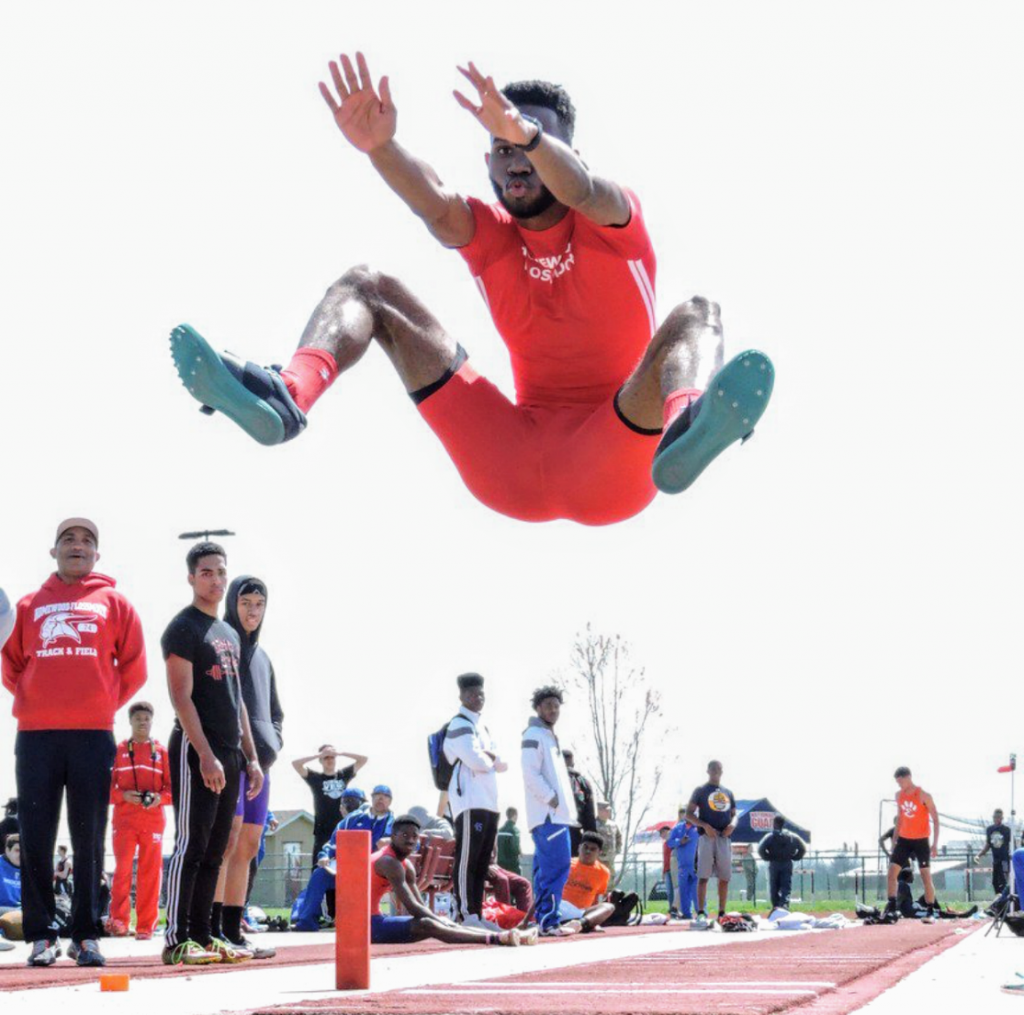
Principles of Flight
By Rob Assise, Homewood-Flossmoor High School
The following represents the principles of the culture we are striving to create within our jump squad at Homewood-Flossmoor High School. It is ever-evolving based on the feedback I receive from athletes. When they understand these concepts it allows us work together to ensure every member of our group has a chance to maximize what they have been given. What follows is written as if I was talking directly to them.
Jumpers are Sprinters First
Around 90% of an attempt in any of the jumps occurs before takeoff. The better you are at sprinting, the better you will be at jumping. When you improve your ability to sprint, you are enhancing the magnitude and direction of the force put into the ground, along with spending less time on the ground. These improvements have a strong correlation with being able to jump further and higher.
When people ask you what events you do in track, you should say, “I am a sprinter who excels in long/triple/high jump” OR “I am a sprinter who also does long/triple/high jump.” I understand every jumper wants to spend time “at the pit.” If you want your time at the pit to involve posting big numbers, you must approach every sprint session with the same enthusiasm and intent you have when you are performing the jumping event(s).
Every Result is Caused by a Preceding Action
What happens in flight is dependent upon what happens at take-off, what happens at take-off is determined by the approach. Therefore…..
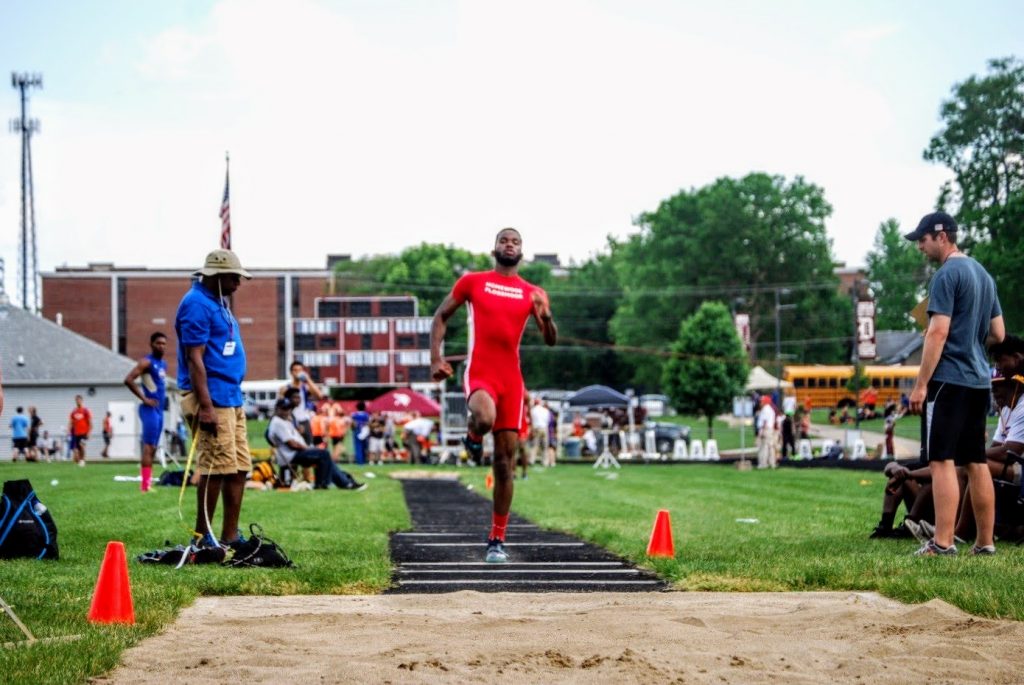
Developing a Consistent Approach is Paramount to Success in the Jumps
An approach is not an aimless run. In order to have an accurate take-off location, the approach must be consistent. These are the key components of a consistent approach:
♦ A quality approach has a rhythm in which the cadence gradually quickens. There should be no abrupt changes in the tempo of ground contact. Monitoring rhythm is something you need to learn how to hear and/or feel. This is best done by being fully engaged throughout the approach during rehearsal. The majority of novice jumpers only focus on the take-off location (the board for LJ/TJ, a spot for HJ). I am asking you to not only have the target in mind, but be aware of where you are at as you approach the target. This can be best done by…
♦ Developing your own personal system to keep track of where you are in your approach. The most common system is to count the steps of the take-off leg. Examples for a 16 step long jump approach (the pop/pop represents the penultimate and take-off steps):
1-2-3-4-5-6-7-pop/pop
OR
1-2-3-4-1-2-3-pop/pop
Counting does not work for everyone. You have the freedom to experiment and find a system that works for you, but YOU ARE RESPONSIBLE for knowing where YOU are at in your approach AT ALL TIMES. Some jumpers can do this just through “feel.” Others sync their approach to a song or beat. Find a system that works best for you to ensure accuracy.
♦ Just as cadence of ground contact gradually increases, so does the angle the body makes with the ground. A gradual push to vertical running is necessary to develop momentum. The push to vertical must occur over a consistent number of steps.
You are Responsible for Troubleshooting Issues with your Approach
Most of the time, I will be there to assist, but sometimes I will not. Here are guidelines for independent correction based on the most common issues.
♦ Short of the desired take-off location.
Did you push optimally at the start of the approach?
1) If no, rehearse with ensuring you push optimally.
2) If yes, it is probably necessary to move your mark forward.
♦ Past the desired take-off location.
Did your penultimate and take-off have a quick rhythm?
1) If no, rehearse with this as the focus.
2) If yes, it is probably necessary to move your mark backward.
In answering to the two issues above, high jumpers also need to take where they initiated their curve into consideration.
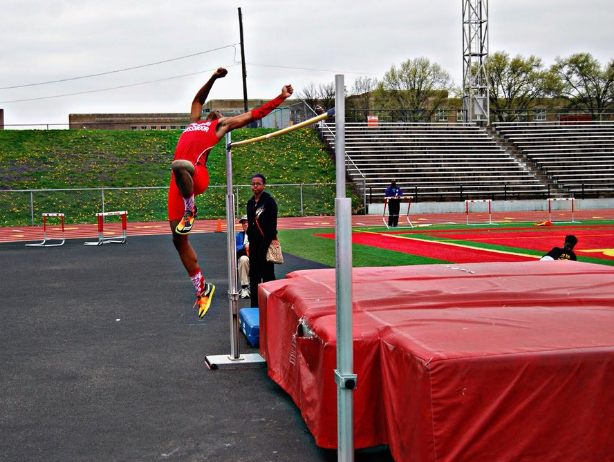
♦ The false-positive
Sometimes jumpers feel they are accurate, but are not because they extend their penultimate and/or take-off to get to the take-off spot. Identifying this independently requires the ability to feel or hear the rhythm of your approach. Two “approach buddies” can assist with this. One can be in charge of monitoring your steps. For example, tell him your take-off is your 8th left. He will mark where it occurs. The other buddy can just listen to the rhythm of the last two steps (the pop/pop) to see if it is quicker than the preceding steps.
In the horizontal jumps, it is important to know where it is best for your take-off to hit during warm-ups for a competition. Many jumpers are more accurate during competition when they are anywhere from just behind, to approximately 12 inches behind, the board during warm-ups. The extra adrenaline produced during an actual attempt gets them closer to the foul line. Other jumpers are best served when they are on the board during warm-ups. It is your responsibility to see if a pattern emerges over a series of competitions and make adjustments accordingly. I will help with identifying the pattern and developing a plan, but you need to be able to provide answers regarding your warm-up and competition approaches.
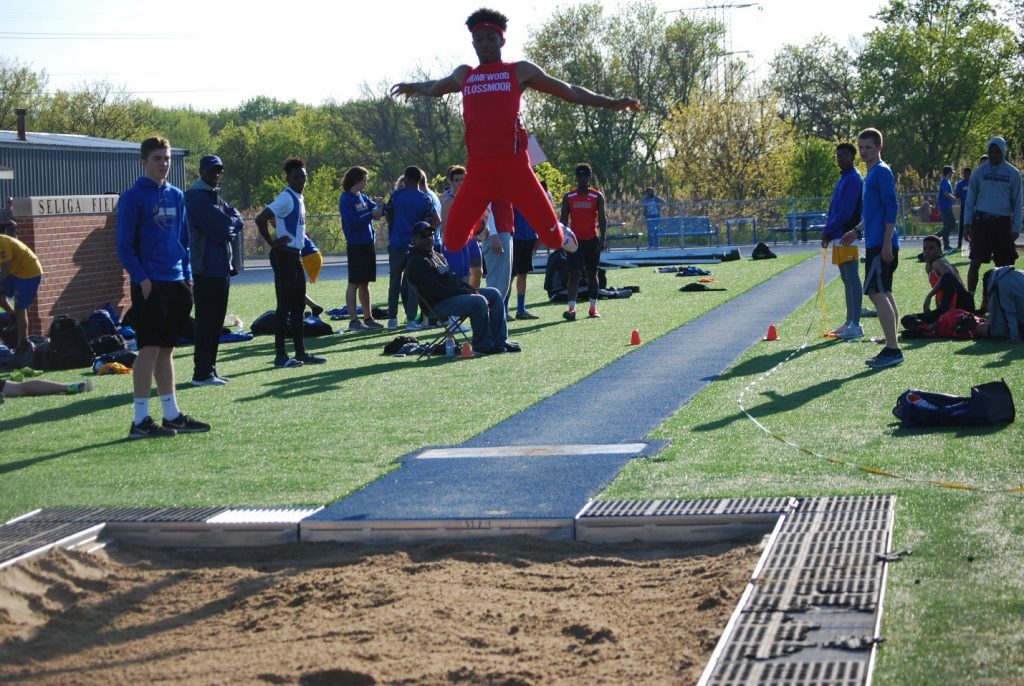
♦ Things we DO NOT do to fix issues with our approach.
1) Switch the leg you start with. If rhythm is an essential part of an approach, how could adding or subtracting a step (this is what happens when you switch starting legs) be a legitimate corrective strategy? Switching legs takes the rhythm you developed in practice and tosses it out the window.
2) Run back from the takeoff point at a meet. This screams, “I am not prepared!” We will do this ONCE in the horizontal jumps to establish a tentative approach distance in practice, and then make adjustments to establish the exact number (we will use a different structure to find a high jump starting point). YOU are responsible for knowing your distance, your jumping leg, and the number of steps you take in your approach. I will have this information, but if you do not have it memorized, it says that you are not invested in becoming the best jumper you can be.
But Coach Assise, you titled this “Principles of Flight” and all you talked about sprinting and the approach! That is correct. In order for optimal flight to occur, we need to strive to be as close to perfect as possible before we leave the ground.
+++
Like any coach, I am a master thief, and the vast majority of the ideas here have been stolen from: Boo Schexnayder, Nick Newman, Latif Thomas, Fuzz Matthews, Nate Beebe, Clifton Culpepper, Greg Rohr, Tony Holler, Chris Korfist, Joel Smith, Dan Fichter, Don Luy, Dave Peabody, and numerous others. Thank you to all who have be so willing to share their knowledge!
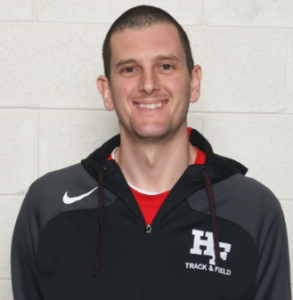
Rob Assise is in his 15th year teaching mathematics and coaching track and field at Homewood-Flossmoor High School. He also has experience coaching football and cross country. Rob has attended all six Track-Football Consortiums and was a presenter at TFC-6. Additional writing of his can be found at Simplifaster, Just Fly Sports, and ITCCCA. He can be reached via e-mail at robertassise@gmail.com or Twitter @HFJumps.

